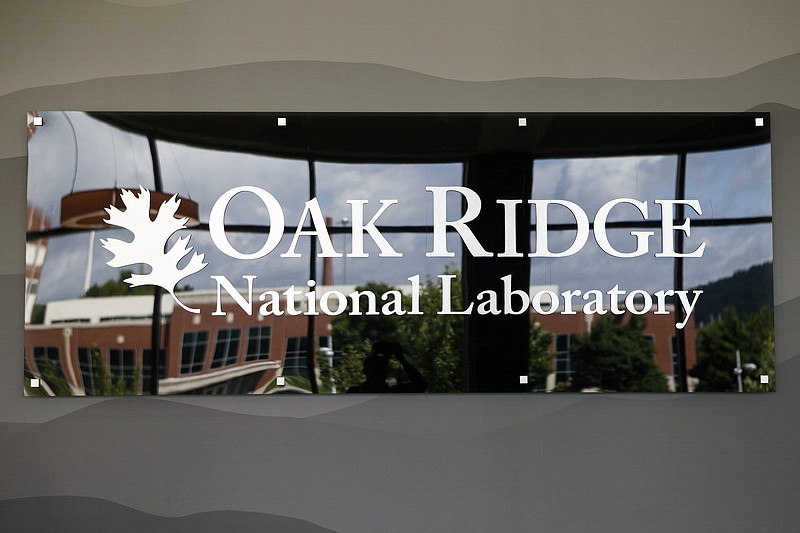The Tennessee Valley Authority, which powered the development of the atomic bomb and other technologies in Oak Ridge to help win World War II, is joining again with Oak Ridge to try to defeat a new enemy - global warming.
TVA, which has pledged to become carbon-free by 2050, said Tuesday it has signed a memorandum of understanding with the Oak Ridge National Laboratory to explore decarbonization technologies, including carbon capture, advanced nuclear power and energy storage advancements.
In an announcement of the new partnership, TVA President Jeff Lyash said the Department of Energy's research facilities at Oak Ridge can help "identify and scale innovative nuclear and other technologies that will create a cleaner, carbon-free future."
As the Department of Energy's largest science and energy laboratory, Oak Ridge has pioneered the peaceful use of the atom over the past eight decades since developing the first atomic bomb during World War II as part of the Manhattan Project. The lab also is researching carbon sequestration methods and ways to convert carbon dioxide linked with global warming into other products.
"ORNL applies a broad range of scientific capabilities to the development of clean energy solutions, and TVA is an invaluable partner for deploying these technologies for the benefit of East Tennessee and the nation," Oak Ridge Director Thomas Zacharia said in a statement.
But environmental groups question TVA's approach and commitment to limiting global climate change, citing the utility's new investments in natural gas-powered generators being planned to replace many of the aging coal-fired plants TVA is shutting down.
TVA, the nation's biggest public utility, plans to phase out the last of the 59 coal-fired generators it once operated across the Tennessee Valley by 2035 as part of a plan to reduce its carbon emissions by 80% below its 2005 levels. In their place, TVA is adding more efficient gas-fired power generation and is pursuing building new small modular reactors in Oak Ridge and other sites.
But the Southern Environmental Law Center said TVA is spending billions of dollars on its continued reliance on fossil fuels and new and unproven nuclear technologies that will still emit greenhouse gases that contribute to global warming.
Amanda Garcia, the center's Tennessee director, said the recent report from the United Nations' Intergovernmental Panel on Climate Change underscores the need for TVA and others to take bold and immediate action and move away from the burning of all fossil fuels as soon as possible.
"While TVA's announcement that it is investing in theoretical solutions like carbon capture and modular nuclear reactors sounds good on paper, the reality is that these technologies are unproven and years away from being viable," Garcia said in a statement in response to the announcement from TVA and Oak Ridge. "If TVA is serious about reducing its massive carbon footprint, it will scrap its reckless plans to spend billions of dollars building new methane gas plants and will instead invest in proven clean energy solutions - like solar and wind power, energy efficiency and battery storage technology - that are effective, affordable and available right now."
Lyash has defended TVA's increase in natural gas generation as "a bridge fuel" until new technologies are developed that can ensure reliable and affordable electricity. Natural gas plants generate fewer carbon emissions than coal plants, and gas-fired generators can be quickly started and stopped to help ensure reliable power supplies to support more intermittent generation from solar and wind.
Read how TVA is phasing out coal generation
"We need to ensure that the lights stay on when the sun doesn't shine or the wind doesn't blow," Lyash told the Times Free Press last year.
Partnerships between TVA and Oak Ridge date to the earliest days of the lab, which was created after World War II to help develop commercial nuclear reactors for power generation. TVA has supplied power for Oak Ridge and has worked with the lab on the first full-scale computer simulation of a working nuclear reactor and installation of 3D-printed reactor components.
Read how Oak Ridge lab helps build a smarter electric grid
"TVA is proud to partner with Oak Ridge National Laboratory to identify and scale innovative nuclear and other technologies that will create a cleaner, carbon-free future," Lyash said in a statement Tuesday. "This is right in TVA's wheelhouse, and our partnership will redefine what's possible for the national and global energy industry."
TVA spokesperson Ashton Davies said in a phone interview Tuesday that TVA and Oak Ridge are still working out details of their joint projects, and TVA has yet to pledge any specific funding for the research, which is now funded by the Department of Energy's Office of Science.
Under the agreement, TVA and Oak Ridge said they will explore:
- Direct air carbon capture from power-generating plant exhaust and from dilute sources such as the atmosphere.
- Converting carbon dioxide into valuable products.
- Hydrogen generation and utilization.
- Static and dynamic electric vehicle, or EV, charging and applications that pair EVs and the electrical grid.
- Light-water small modular reactors and fourth-generation advanced nuclear reactors, building on a 2020 memorandum of understanding to pursue advanced reactor technology.
- Long-duration energy storage.
- Electrification of parts of the economy currently fueled by fossil energy, as well as solutions related to geothermal heating and cooling along with process heating.
- Modernization of the grid to enhance reliability and resiliency, improve cybersecurity and prevent outages due to extreme weather.
Contact Dave Flessner at dflessner@timesfreepress.com or at 423-757-6340.


